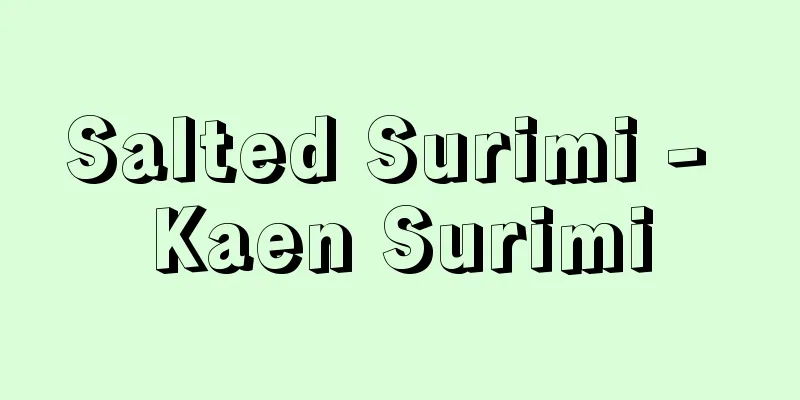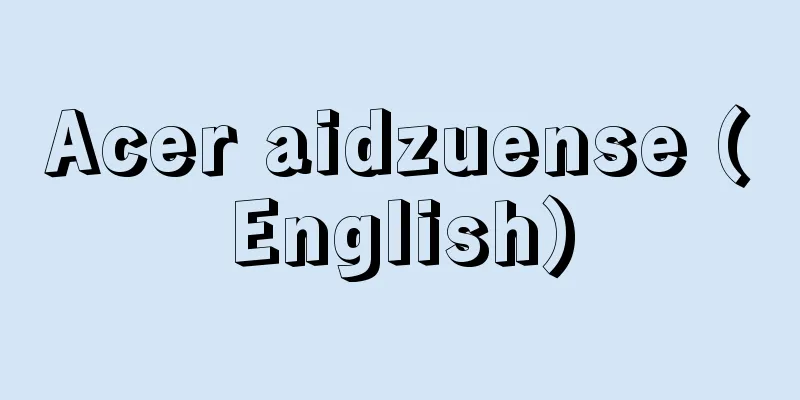Salted Surimi - Kaen Surimi

|
...This frozen surimi technology was developed in 1952 at the Hokkaido Fisheries Experimental Station. Surimi is classified into unsalted and salted surimi according to the manufacturing method, and into onshore and shipboard (ocean) surimi according to the manufacturing location. Unsalted surimi is made by adding 5-8% sucrose or sorbitol and 0.2-0.3% polyphosphate as a protein denaturation inhibitor, and mixing with a mixer or silent cutter. *Some of the terminology that refers to "salted surimi" is listed below. Source | Heibonsha World Encyclopedia 2nd Edition | Information |
|
…この冷凍すり身技術は1952年に北海道水産試験場において開発された。 すり身は製造方法により無塩および加塩すり身,製造場所により陸上および船上(洋上)すり身に分類される。無塩すり身とはタンパク変性防止剤としてショ糖あるいはソルビット5~8%,重合リン酸塩0.2~0.3%などを加えてミキサーかサイレントカッターでかくはんして製造したものである。… ※「加塩すり身」について言及している用語解説の一部を掲載しています。 出典|株式会社平凡社世界大百科事典 第2版について | 情報 |
Recommend
emperor
…(1) Imperator comes from the Latin imperare, mea...
Small group activities
It is one of the methods of participation in manag...
Ikuo Oyama
Social activist and political scientist. Born in ...
Succession to the throne - Oukeisho
…In contrast, under the Japanese Constitution, wh...
Arago
French astronomer and physicist. In 1805, he worke...
Relaxation phenomenon
When a system surrounded by the outside world is ...
Romanesque art (English)
An art style from the European Middle Ages. The t...
Tart - Tarte (English spelling) French
A type of Western confectionery. A dough made fro...
Uranyl Nitrate - Camphor Uranyl
UO 2 (NO 3 ) 2 (394.04). When uranium oxide (VI) ...
Lebanon [Mountains] - Lebanon
A mountain range that runs north to south parallel...
Solar Year - Taiyounen
The time it takes for the sun to leave the vernal...
Gannibal, AP (English spelling) GannibalAP
...His paternal ancestors were nobles of distingu...
Opinion advertising - Ikenkoukoku
Advertisements that appeal to public opinion on v...
Longinos (English spelling)
Greek name usually given to the anonymous author o...
Master Achikichi
⇒Achiki Source: Kodansha Digital Japanese Name Dic...









